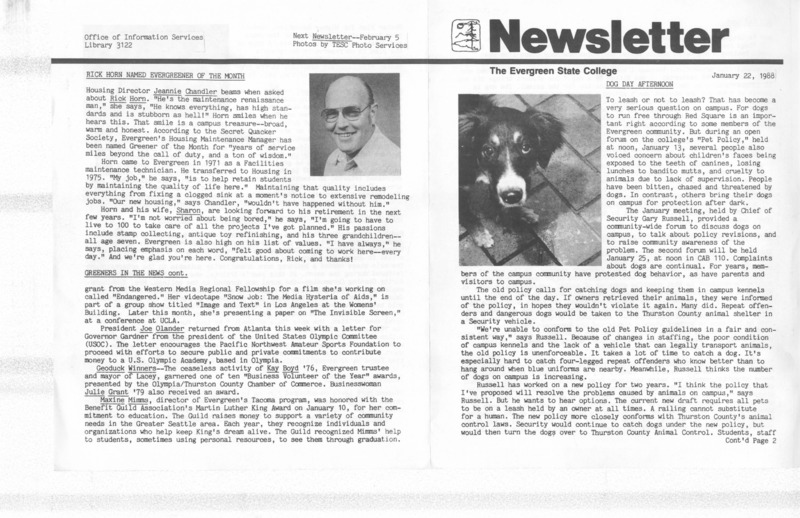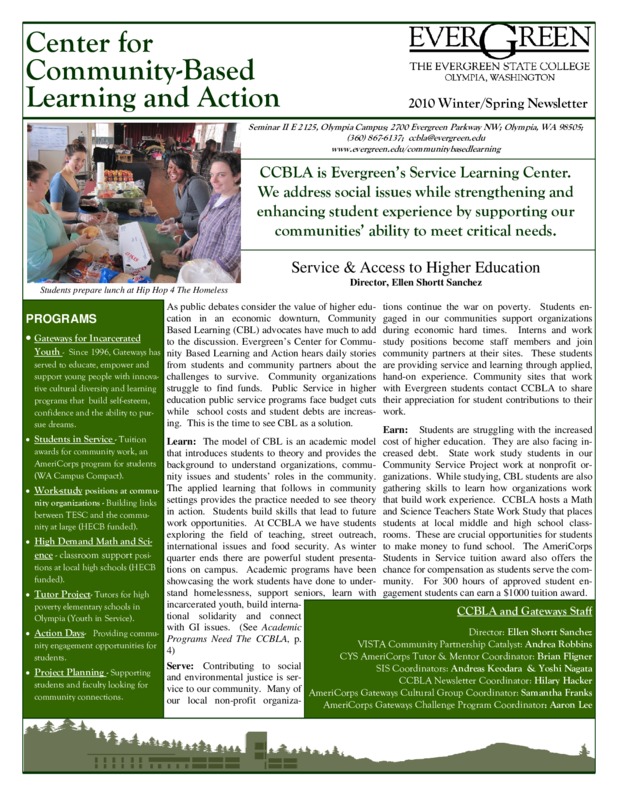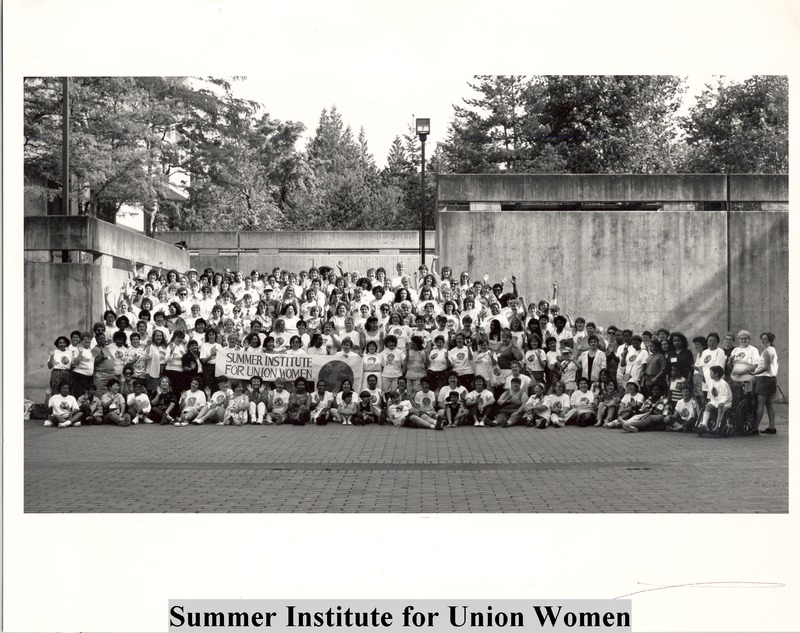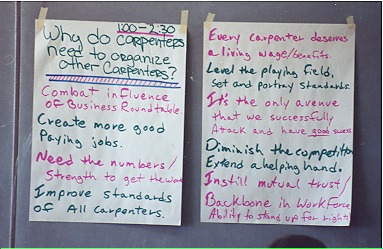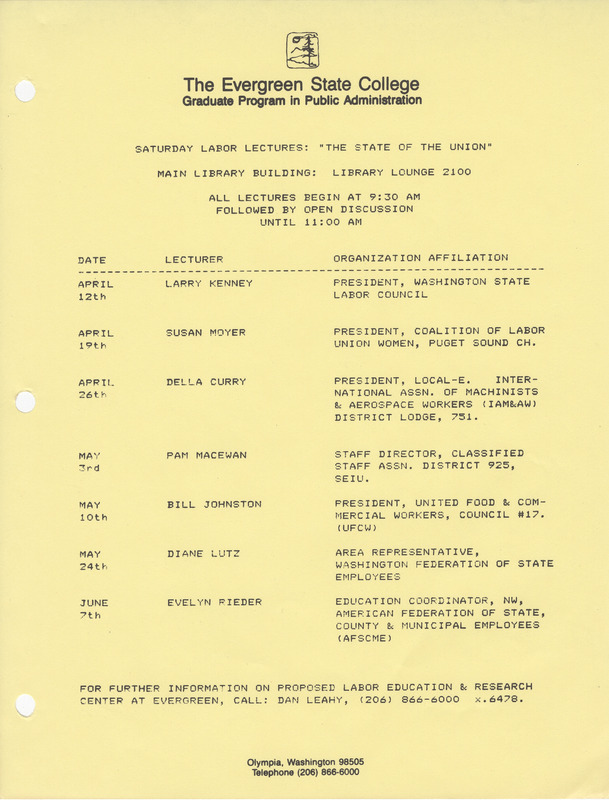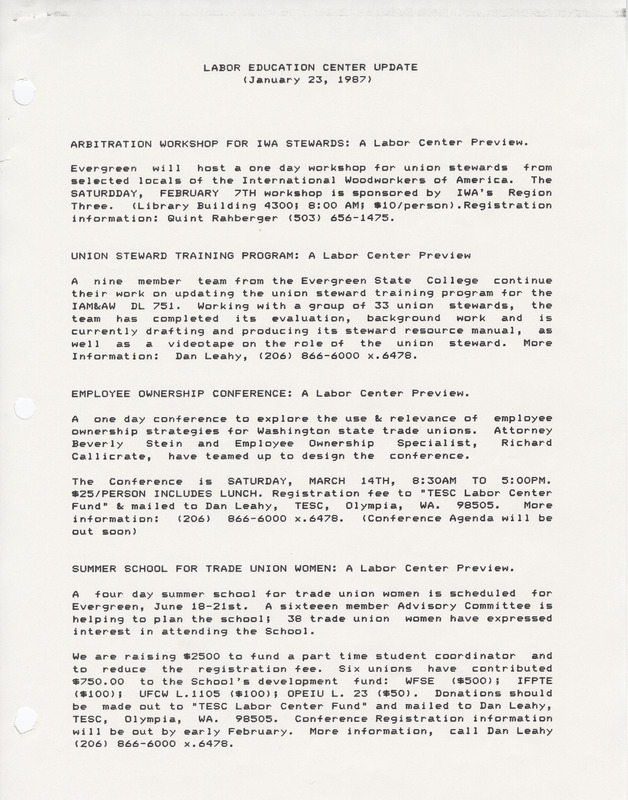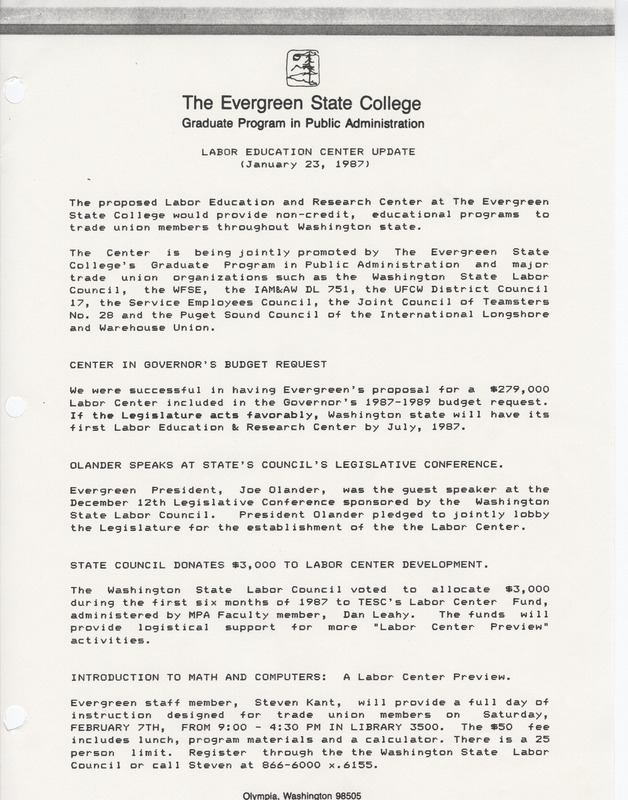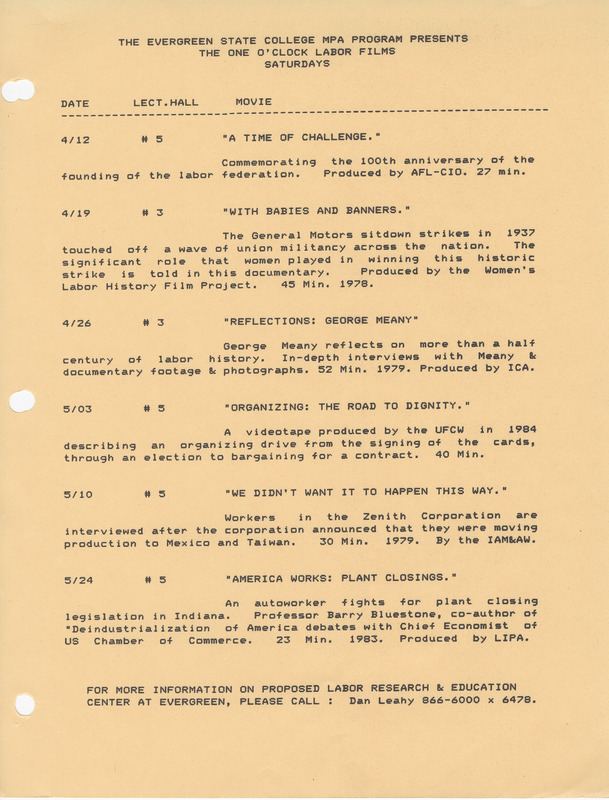Lesson Plan
Overview:
That Washington State legislature established the Evergreen State College Labor Education and Research Center in July 1987 via a mandate to provide access for Washington State union members to education and research opportunities. The Center became part of the Academic Division of Evergreen and one of the Public Service Centers of the College.
The first Director of the Labor Center was Dan Leahy, a member of the faculty at Evergreen beginning in 1984. He taught public policy classes in the MPA program, as well as undergraduate courses in political economy and social movements. He taught such varied classes as the Mexican Nation State travel class, the classes on Marching, Anarchism, New Orleans, Social Forums, the World Trade Organization, and Labor History. He left his position as the Labor Center Director in 1995, continuing to teach until his retirement in December 2008.
The second Director of the Labor Center was Helen Lee, who was hired to be the Associate Director of the Labor Center in 1987. She had attended Evergreen in undergrad, specializing in Labor Economics and Women’s Equality. She went on to acquire her graduate degree from State University of New York Empire State College in Labor Economics and Labor Studies and her Masters in Public Policy, Labor Economics, and Labor from City University of New York.
Peter Kardas became the third Director of the Center in 2000, leaving the Center when it moved from Evergreen to the South Seattle Community College in July 2010. Previous to Evergreen, Kardas had acquired his PhD in Political Science from Penn State University.
Along with its Directors, the Labor Center employed both full-time and part-time labor educators, as well as many student employees throughout the years at Evergreen. The Center’s Advisory Committee was comprised of members of the labor community, from unions to other worker-centered organizations, and helped to advise the Labor Center. Likewise, Evergreen faculty taught Labor Studies classes on campus, facilitated community-based Labor Education classes, and supported the student activities with the Center.
The Labor Center had three main areas of work: residential or multi-day schools, shorter workshops and trainings, and public conferences. Among these have been the Summer School for Union Women, the African American Leadership Conferences, and the New School for Union Organizers. The Labor Center sponsored and collaborated with other organizations on the 2002 Women of Color conference, the 2004 Union-Community Coalitions Conference, and the 2008 Workers’ Assembly on Immigration.
On July 1st, 2010 the Center moved from The Evergreen State College to the South Seattle Community College and became the Washington State Labor Education and Research Center. The Labor Center continues to organize conferences and training programs, as well as managing a library with labor materials, and produces the Washington State Workers’ Rights Manual.
Discussion Questions:
1. Take a look at “The Evergreen State College MPA Program presents the one o’clock labor films Saturdays.” What themes do you see in your overall look at the list of films? Can you see any gaps in [knowledge] in what perspectives are being presented by the films?
2. Read through the “Saturday labor lectures: “The State of the Union,” 1987” item. What do the different organization affiliations of the speakers tell you about the kind of work the Labor Center was hoping to do? Are there missing types of organizations and what do you feel those missing organizations might be?
3. Read the section about the Summer Institute for Union Women in the “Labor Education Center update, January 23, 1987” and compare with the photograph “Group photo of the participants in the Summer Institute for Trade Union Women at the Evergreen State College’s Labor Center.” What observations can you make about the interest in the Summer Institute between the planning period and the actual event? What might the value be in having a school specifically for union women?
4. Read over both the “Labor Education Center update, 1987” and the “Labor Education Center update, January 23, 1987.” Who appear to be the stakeholders in creating and maintaining the labor center program at Evergreen? What themes stand out to you in terms of priorities for the labor center?
5. Read over “Resolution No. 21, Labor Education and Research Center, 1987.” What do the resolutions tell you about the kind of educational opportunities the labor leaders who pushed for the Labor Center’s creation were hoping for? Read over the article: “Center for Community-Based Learning and Action YAYA– Youth and Young Adult Network of National Farm Worker Ministry” (page 6) in the “Center for Community-Based Learning and Action Winter/Spring newsletter, 2010.” How does this type of event fit in with the objectives put forth in the “Resolution No. 21?”

